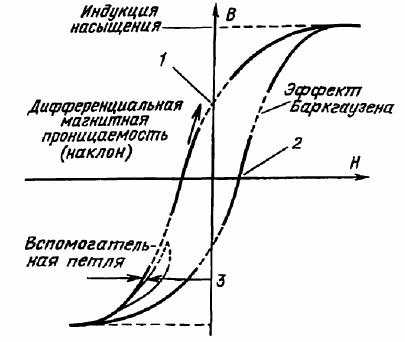What is magnetization
Magnetization is a term used to describe the magnetic field that is established in a substance due to its polarization. This field arises under the influence of an applied external magnetic field and is explained by two effects. The first of them consists in the polarization of atoms or molecules, it is called the Lenz effect. The second is the effect of polarization in ordering the orientations of magnetons (unit of elementary magnetic moment).
Magnetization is characterized by the following properties:
1. In the absence of an external magnetic field or other force ordering the orientation of the magnetons, the magnetization of the substance is zero.
2. In the presence of an external magnetic field, magnetization depends on the strength of this field.
3. For diamagnetic substances the magnetization has a negative value, for other substances it is positive.
4. In diamagnetic and paramagnetic substances, magnetization is proportional to the applied magnetizing force.
5. For other substances, the magnetization is a function of the applied force acting in concert with the local forces ordering the orientations of the magnetons.
The magnetization of a ferromagnetic substance is a complex function that can be most accurately described using hysteresis loops.
6. The magnetization of any substance can be represented as the magnitude of the magnetic moment per unit volume.
The phenomenon of magnetic hysteresis is represented graphically in the form of a curve that depicts the relationship between the strength of the applied external magnetic field H and the resulting magnetic induction B.
For homogeneous substances, these curves are always symmetrical about the center of the plot, although they vary greatly in shape for different ones ferromagnetic substances… Each specific curve reflects all possible stable states in which the magnetons of a given substance can be in the presence or absence of an applied external magnetic field.

Hysteresis loop
The magnetization of substances depends on the history of their magnetization: 1 — residual magnetization; 2 — coercive force; 3 — displacement of the working point.
The figure above shows the various characteristics of the hysteresis loop, which are defined as follows.
Persistence is expressed by the magnetic force required to return the domains to the initial conditions of zero equilibrium after this equilibrium is disturbed by an externally applied saturating field. This characteristic is determined by the point of intersection of the hysteresis loop of the B axis (which corresponds to the value H = 0).
Coercive power The residual external field strength in the substance is after the applied external magnetic field is removed. This characteristic is determined by the point of intersection of the hysteresis loop along the H axis (which corresponds to the value H = 0).The saturation induction corresponds to the maximum value of the induction B that can exist in a given substance, regardless of the magnetizing force H.
In fact, the flux continues to increase beyond the saturation point, but for most purposes its increase is no longer significant. Since in this region the magnetization of the substance does not lead to an increase in the resulting field, magnetic permeability drops to very small values.
Differential magnetic permeability expresses the slope of the curve at each point on the hysteresis loop. The contour of the hysteresis loop shows the nature of the change in magnetic flux density in a substance with a cyclic change in the external magnetic field applied to that substance.
If the applied field ensures that states of both positive and negative flux density saturation are achieved, then the resulting curve is called main hysteresis circuit… If the flux density does not reach the two extremes, then the curve is called auxiliary hysteresis circuit.
The shape of the latter depends both on the intensity of the cyclic external field and on the specific location of the auxiliary loop relative to the main one. If the center of the auxiliary loop does not coincide with the center of the main loop, then the corresponding difference in magnetizing forces is expressed by a quantity called magnetic displacement of the operating point.
Return of magnetic permeability Is the value of the slope of the auxiliary loop near the operating point.
Barhausen effect consists of a series of small "jumps" of magnetization resulting from a continuous change in the magnetizing force.This phenomenon is observed only in the middle part of the hysteresis loop.
See also: What is diamagnetism


